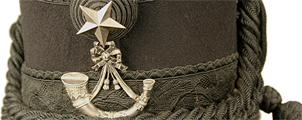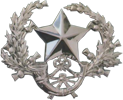Nameless faces?
There are literally hundreds of excellent photographs in the Cameronians regimental museum collection. One could argue that photographs are one of our richest resources, in that they provide visual documentation of the Regiment’s history, and the men who made it.
Unfortunately, we aren’t always able to make best use of a photograph as, to put it simply, we don’t know much about it; who does it show, when was it taken, what event is being depicted? For the majority of the photographs in the regimental collection, this information simply hasn’t been recorded.
At a guess, less than a quarter of the photographs in the regimental collection bear the names of the soldiers shown. Formal, posed, group photographs of a Company, Platoon or sports team might have a title and a date, but rarely individual names.
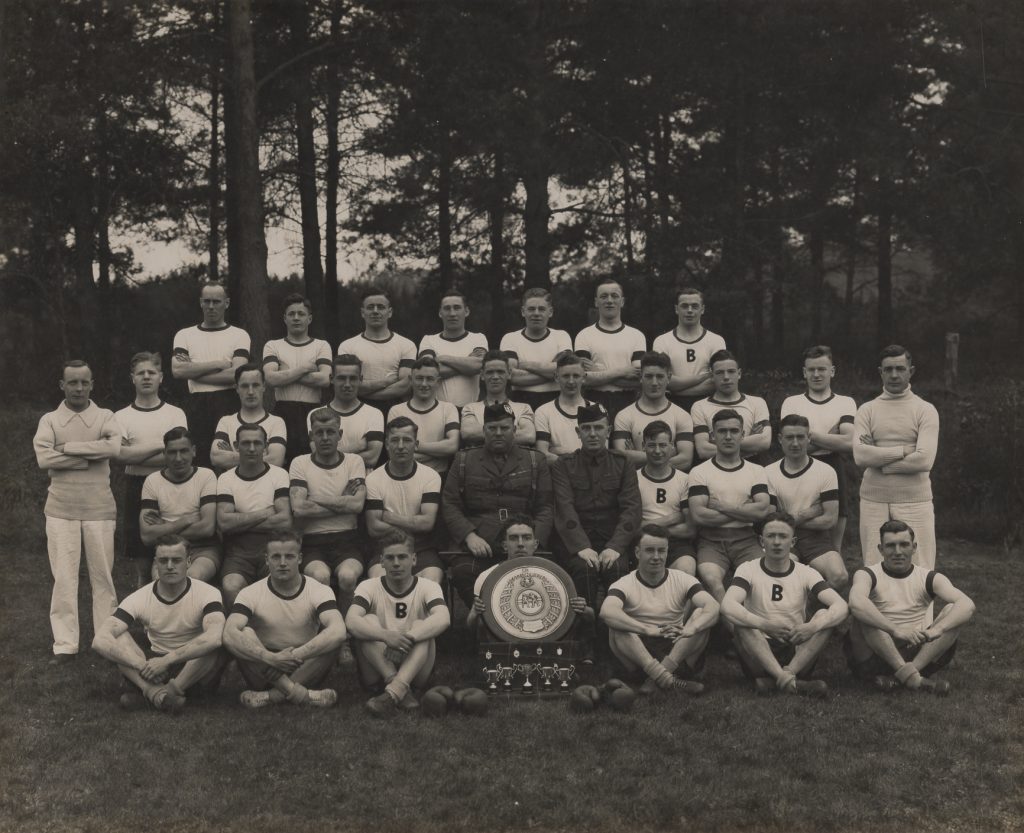
Often a photograph has been pasted into an album with little or no caption, or has been removed from the mount that had the title recorded. If a photograph had been handed to the Regiment in times past, or to the museum in it’s infancy when still staffed by soldiers – there was often an assumed level of knowledge and familiarity with regimental photographs and so written details weren’t always deemed necessary. In other cases, the name of a soldier may have been written on the reverse of an image, but often without details such as when and where the photograph was taken. Often this is because the family member who may have donated the photograph didn’t know more than the name of the relative depicted – and even this might not always be certain. I’m sure many of us have old family photographs that we have inherited, with only a vague notion of which great-great granddad/granny/uncle or relative that we think might be shown. How many of us regularly lament the fact we didn’t pay more attention (or take written notes) when an older relative was relating family history stories to us, or pointing out faces in the family albums? I certainly do, and I should know better!
With that said, what can we do with these unidentified photographs? Luckily, with many military photographs there is usually always some detail that can be discerned as a starting point. The type of uniform worn can usually help establish, at the least, whether the sitter is a soldier, sailor or airman, and possibly also give us a rough period for when the photograph may have been taken. The more detail a photograph contains, especially in terms of uniform, the better chance we have of being able to identify things such as a regiment or battalion, time period, and possibly a location. There are many books covering this subject alone, not to mention some excellent online research guides that can be a useful starting point for those looking to research their own family photographs. The Scottish Military Research Group have an excellent guide aimed specifically for those with photographs of relatives in Scottish units – http://scottishmilitaryresearch.weebly.com/uploads/7/3/9/1/73918079/scottish_military_research_using_family_photographs.pdf
Not forgetting James Taub’s excellent blog post on the subject of identifying Cameronians in First World War photographs – http://cameronians.apps-1and1.net/srid/
With many photographs in the regimental collection, it has been possible to identify a particular unit or even identify individual soldier(s) by close examination of the detail on show.

The above photograph is a perfect illustration of this. The title tells us that the group shown were Field Marshal Haig’s guard of honour when he unveiled the Regimental memorial at Kelvingrove Park (9th August 1924). A further note on the reverse of the image records that the men shown were from the 6th Battalion – one of the Territorial regiments of The Cameronians (Scottish Rifles). All the men in this photograph are wearing medals related to service in the First World War; a number of those shown are awards given for gallantry, or long, meritorious service. The combinations of these awards, together with the ranks of the wearers at a given point in time, and the fact they are all from the 6th Battalion makes it possible for us to put likely names against some of the men shown. Trawling through seniority lists and other 6th Battalion notes in the Regimental magazine, The Covenanter, from the 1920s gives me potential names for seven of the men shown: rear row, second from left – CQMS A. Peat MM; front row, left to right – Sergeant John Stevenson DCM, MM, RQMS J. Hamilton, RSM J. J. Wall MM, MSM, Lieutenant A. Cullen, unknown CSM, CSM J. Williams MM, MSM, unknown CSM.
Sometimes one can be very lucky and hit the jackpot while searching through resources like The Covenanter. Take the photograph at the start of this article as an example – if you remember it was a photograph of the boxing team from ‘B’ Company, 2nd Battalion, taken at Bordon in 1936. Looking through The Covenanter magazine for May 1936 reveals a reproduction of this very photograph, along with an accompanying article, and, more importantly the names of the men shown.
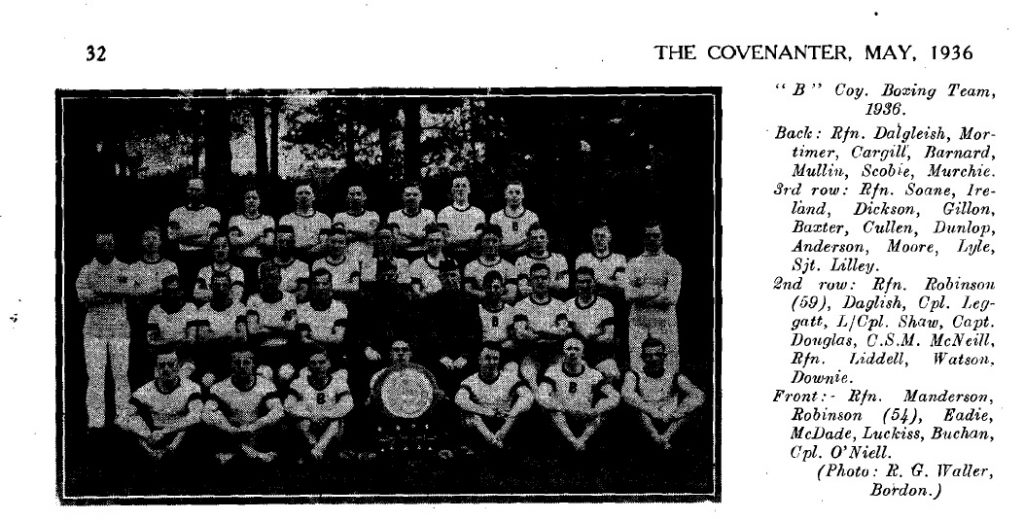
The following photograph was donated by a relative of a Cameronian soldier, one of the group shown. In this instance, the name of the soldier has been recorded on the reverse; i.e. ‘Charles Henderson, extreme left, back row’. None of the other soldiers are identified, and the photograph is undated although the donor knew that their relative had served in the First World War.

The badges and other insignia on show, however, tell us much more. The badge worn on the upper arm, consisting of three coloured blocks (best seen on Charles, standing on left) is that worn by the 2nd Scottish Rifles while part of the 8th Infantry Division, from 22nd Sept 1914 until 3rd Feb 1918 when they moved to 20th Division. Some of the men also wear a wound stripe(s) on the lower left sleeve; this was introduced in July 1916. At least six of the men also wear a medal ribbon above the left-breast pocket, most likely that of the 1914 Star – these were first issued late 1917/early 1918 – the 1914/15 Star ribbon was identical to the 1914 Star, but this wasn’t issued for wear until 1919.
The more we work through our photographic collections while cataloguing, or researching exhibitions and displays, the more familiar we become with things such as regimental peculiarities of uniform, barrack buildings and background scenery at camps and training facilities, and of course, with individual faces. Close scrutiny of identified faces in labelled photographs has allowed to us to pick out the same soldier in other, unlabelled images. Quite often the presence of this ‘well kent face’ is enough to give us a potential unit identification (if looking at a group photograph), and a broad time period. The more we know about a photograph, the more useful it becomes in terms of illustrating the regiment’s history.
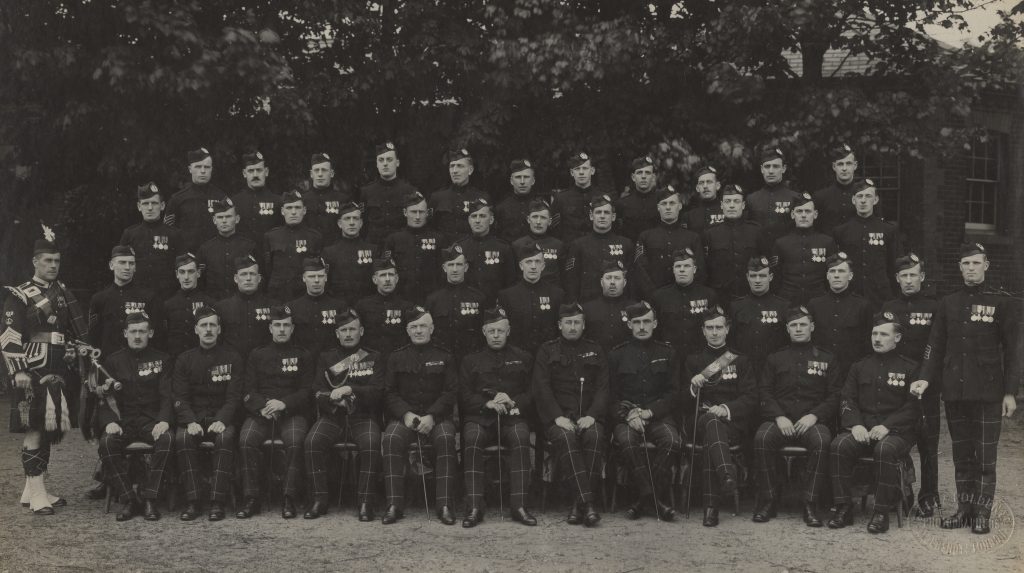
The excellent photograph above was simply labelled “Sjt’s Mess, 1923”. A search of our collections database revealed that there was another photograph in the collection with a similar title, that version being framed with the names of those shown printed on the mount. A physical check of this second photograph confirmed that the images shown were identical. What’s more – the framed photograph is extremely large and difficult to digitise due to it being behind glass; the unlabelled copy is small enough to scan and reproduces at a very high quality. Looking through the faces, several men were familiar and could be identified in other photographs. Sitting second from the left in the front row is Company Sergeant Major John Crymble.
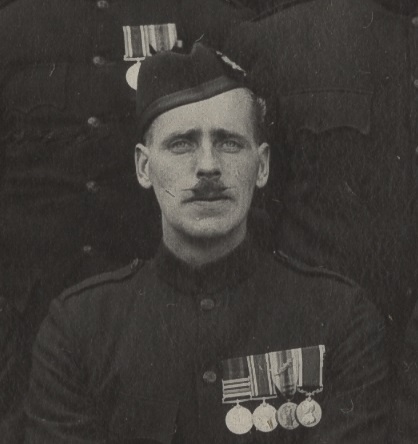
If we look closer at the First World War photograph of the 2nd Battalion above, look who’s sitting in the front row…

Of course, researching a solitary photograph is a time consuming process with no guarantee of the results. We are careful nowadays to make sure we capture as much information about any object that comes into the museum collection, whether it be a photograph, medal, item of uniform etc. It is important that we carefully record who the item belonged to, when and how it was used, and any other important details relating to an objects history and it’s owner. With this in mind, it is worth taking the time to sort through any family photographs you have and add in any details that will someday prove invaluable to future generations, budding family tree researchers, and of course, museum curators!
Comments: 0
